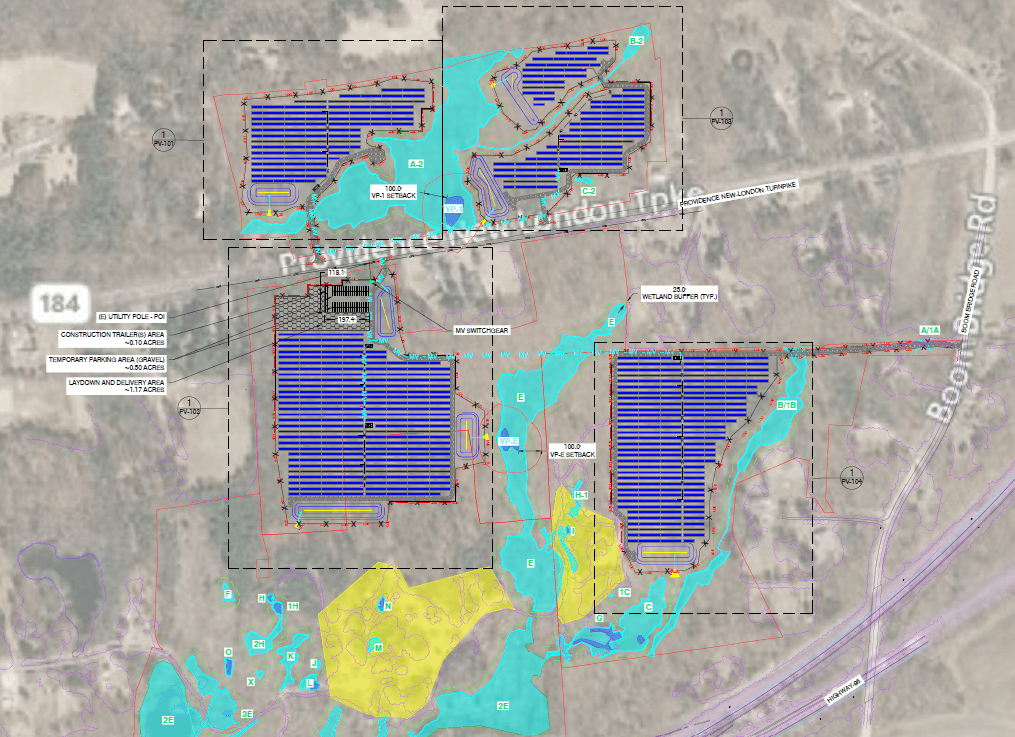What started off years ago as a relatively uncontroversial proposal to turn an abandoned gravel quarry located in North Stonington into a 9.9 megawatt solar project, has shifted to a plan to clearcut 44 acres of forestland — North Stonington Solar Park is latest example of friction in Connecticut between two key environmental priorities: renewable energy production and forest preservation.
In 2016, the state Department of Energy and Environmental Protection set out to meet the legislature’s mandate to contract with developers to build new renewable energy projects to supply the state’s utilities.
The choice of an abandoned quarry was a nod to these concerns, but the location was apparently only a minor factor in the department’s decision-making, that weighed project costs heavily over qualitative factors like siting a project on a brownfield.
How much the North Stonington quarry location weighed on the department’s choice of the project is not clear.
DEEP declined to release documents that would explain why the North Stonington project was selected – including the qualitative and quantitative analyses of the project – on the grounds that the information amounted to trade secrets not subject to Freedom of Information laws.
The department selected 25 projects totaling 402 MW of energy capacity, of which 324.5 MW were solar projects. Ten of those projects would be built in Connecticut, and only one was sited on a brownfield – North Stonington Solar Park.
North Stonington officials say the town went along with the project in its early stages, when Connecticut Energy Parks was the developer and the plan was to locate the solar array inside an abandoned gravel pit below the Providence-New London Turnpike.
“We would have argued for some bigger buffers around that vernal pool in the middle, and maybe some additional buffers where it came close to residential properties, but for the most part, we were on board with any project down [in the gravel pit],” said Town Planner Juliet Hodge.
As Nashville-based Silicon Ranch explains the change, after purchasing the project, additional more comprehensive studies of the site turned up wetlands and vernal pools in and around the gravel pit. Those constraints forced the company to buy additional space for the project, and the heavily forested land to the north of the Providence-New London Turnpike was the only available adjacent property.
That rationale still doesn’t make sense to Hodge, who questions why the man-made pools in the gravel pit are more worthy of protection than forestland and the wetlands and watercourses within it.
“Why would you take down a pristine forest to create an area [for a solar project]?” Hodge said. “Maybe it should be a smaller project on just the southern parcel [where the gravel pit is] and pick another spot for a bigger project.”
“Heading in the right direction”
Although the town was initially receptive to the project when it was sited in a gravel pit, news that the project would instead require clearing more than 3,000 trees raised concerns among neighbors and town officials.
In response the company is altering those plans, switching to higher wattage panels grouped closer together to limit the amount of disturbance to wetlands.
The redesign has also trimmed the project of 2 acres of clearcutting, leaving 44 acres of forest to still come down – including a fifth of an acre of a 13.5-acre tract of “core forest.” The changes also reduced the amount of grading needed on the site and increased setbacks to vernal pools and wetlands.
The earlier design would have encroached on the 100 foot “envelope” around a significant vernal pool on the northern property. The new design eliminates that encroachment, but still builds within the “critical terrestrial habitat” 750 feet around a vernal pool.
The proposed solar project in North Stonington is “heading in the right direction,” according to Hodge, but the changes haven’t gone far enough to protect wetlands on the site, she said.
Hodge said the town is still waiting for the company to complete other surveys, including an inventory of rare plants and animals and a geotechnical report on whether the northern property is suitable for the panels, before it submits comments to the Connecticut Siting Council.
“If you’re going to provide a 100-foot buffer on the gravel bank area, claiming environmental resources, I’d say there’s far more valuable environmental resources on the northern parcel that also logically need a 100-foot buffer as well,” she said.
As currently proposed, the project includes three wetlands crossings. Two would replace culverts on an existing farm access road connecting to Boom Bridge Road, another would install a new box culvert to create a new crossing.
Although the council, not the town, decides whether the project is approved, Hodge said the town would not allow the project to be built beside residential properties without a densely landscaped buffer, at a minimum of 25 feet.
“To make this fit in, there’s definitely some work to be done,” she said.

